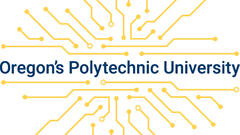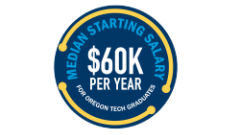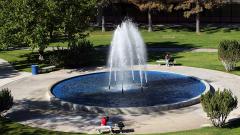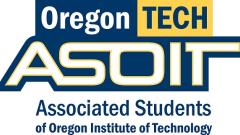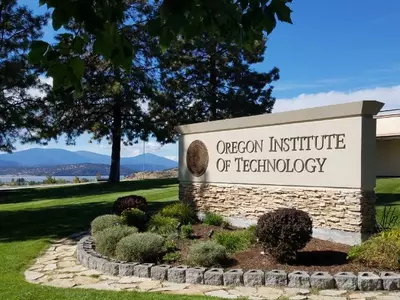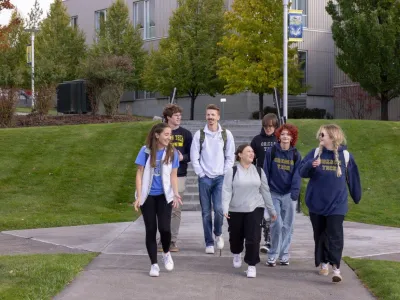Searching for ways to engage their students and show the variety of applications for the Communication Studies and Professional Writing degrees at Oregon Tech, associate professors Dr. Franny Howes and Dr. Amber Lancaster created two unique summer research projects. While brainstorming ways to offer their students hands-on opportunities, they developed summer internships opportunities for a gender-neutral pronoun app and a video/print media project. Both projects are funded through the Provost Office Summer Creativity initiative, which focuses on student success, applied research projects with undergraduates, and course enrichment. A total of 11 projects were funded this summer.
Gender-Neutral Pronoun App
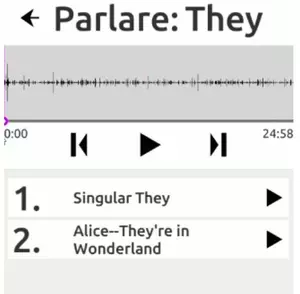
Dr. Howes received a grant to “research, build, and test a fully-functional version of Parlare, an app that teaches gender-neutral pronoun use.” The grant is an extension of one she received in Summer 2019 to design the first proof of concept version. With the continued funding, Dr. Howes hired two student co-investigators, Brennen Thacker and Haley Werst, who are both able to work on the project remotely—Haley from Astoria and Brennen and Dr. Howes from Klamath Falls.
“Summer grants give students a chance to take on roles that closely mirror what they would be doing in creative industries,” shares Dr. Howes. “I’m excited for them to get to shape how this app project becomes a part of their professional portfolios. At the same time, it’s also an important experience for me as a faculty member to get the chance for the very first time in my career to have research assistants.”
The team is using the educational license of the Unity platform to create the app, which will have both text and audio lessons to teach people how to use singular they as well as several “neopronouns” like e and xe.
Graduating this summer from Professional Writing, Haley shared, “The purpose of the Parlare app is to teach people how to use different sets of gender pronouns they may not be accustomed to. Currently, this includes singular they (they/them) and neopronouns like e/em and ze/hir. As our society continues to explore gender and gender expression, these pronouns will become more common. It can be difficult to adapt to using unfamiliar pronouns, so Parlare will exist to meet that need. Because I identify as genderqueer and use, she/they pronouns, I have a firsthand connection to this project and understand its value.”
The software requirements document is complete, and the team has some components of the back end of the app worked out, and they are currently working on developing content.
A senior in Communication Studies, Brennen explained the importance of this project for their careers, “Technical skills needed to develop graphics and write software aside, communication is essential. In any team effort, there is a need to communicate clearly and work through conflict productively; Communication Studies has prepared me to be able to do this, and as a result, we’ve had a great time thus far working on the app with very few road bumps. We’ve been able to work together to clearly communicate what we all want versus need and share our respective viewpoints. So, really, I’m gaining invaluable experience learning to plan a project with a small team, working to understand and integrate diverse viewpoints, and adapting to the communicative needs and backgrounds of others, and creating content that does the same, all hallmarks of the Communication Studies program.”
Video/Print Media Project
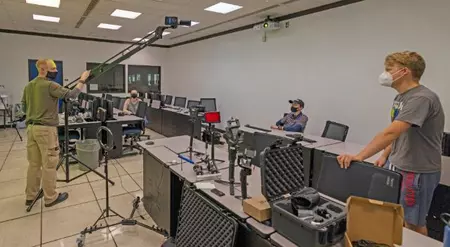
As program director of Professional Writing, Dr. Lancaster is always looking for ways to apply classroom knowledge to hands-on projects and showcase the endless opportunities available to students with Professional Writing expertise. With the grant, Dr. Lancaster was able to support five student interns (Terrik Allman, Lindsay Bullock, Brooke Harshbarger, Jordan Munoz and Brennen Thacker) to work on video and print media to promote the Professional Writing degree and conduct user research on the effectiveness of media messages.
The summer project included deeper learning of video and print media production, then applying that knowledge to create content and conduct user research to assess audience response. Student interns participated in a week-long drone and video production course led by Klamath Film Director, Kurt Liedtke. The course included detailed instruction about drone operations and FAA regulations, followed by a crash course in aspects of film production, lighting, gimbals, green screens, audio, editing, and more. Each student was given an opportunity to operate both an aerial and submersible drone, along with extensive use of professional film equipment.
The team also completed eye tracking training to test how audiences respond to their video. Using Tobii Eye Tracking software, they will be able to track how media messages are received and which portions of the video create excitement about the Professional Writing program.
Dr. Lancaster shares, “Not only does this project provide our students with the opportunity to put their planning and scriptwriting skills to use, but the Tobii eye-tracking tools provide opportunities for our program to partner with industry businesses and provide them with user testing on their materials and products. With fixation data and heat maps, we can visually show what users look at, for how long, or even where they don’t look for information. User research explains with data how their items were perceived, and they can, in turn, provide that to their designers to better reach their audiences.”
Junior Jordan Munoz is already using the Tobii system in a variety of ways. “The system includes a bar on a computer that is used like a webcam, or glasses that can be used wirelessly. The glasses give us flexibility in a field-testing environment. For example, if we have possible students or parents visiting our campus for the first time, if they are working with us to use the glasses, we can track which visual elements on our campus gain the most interest and what items may need to be improved.”
The testing will also include the students working with participants to gain additional information about their feelings and perceptions of items they concentrated on. In providing an analysis of answers, students will put their communication and professional writing skills to the test in creating their reports.
Both projects will have concepts ready by fall term, which is when audience testing will begin.
###

